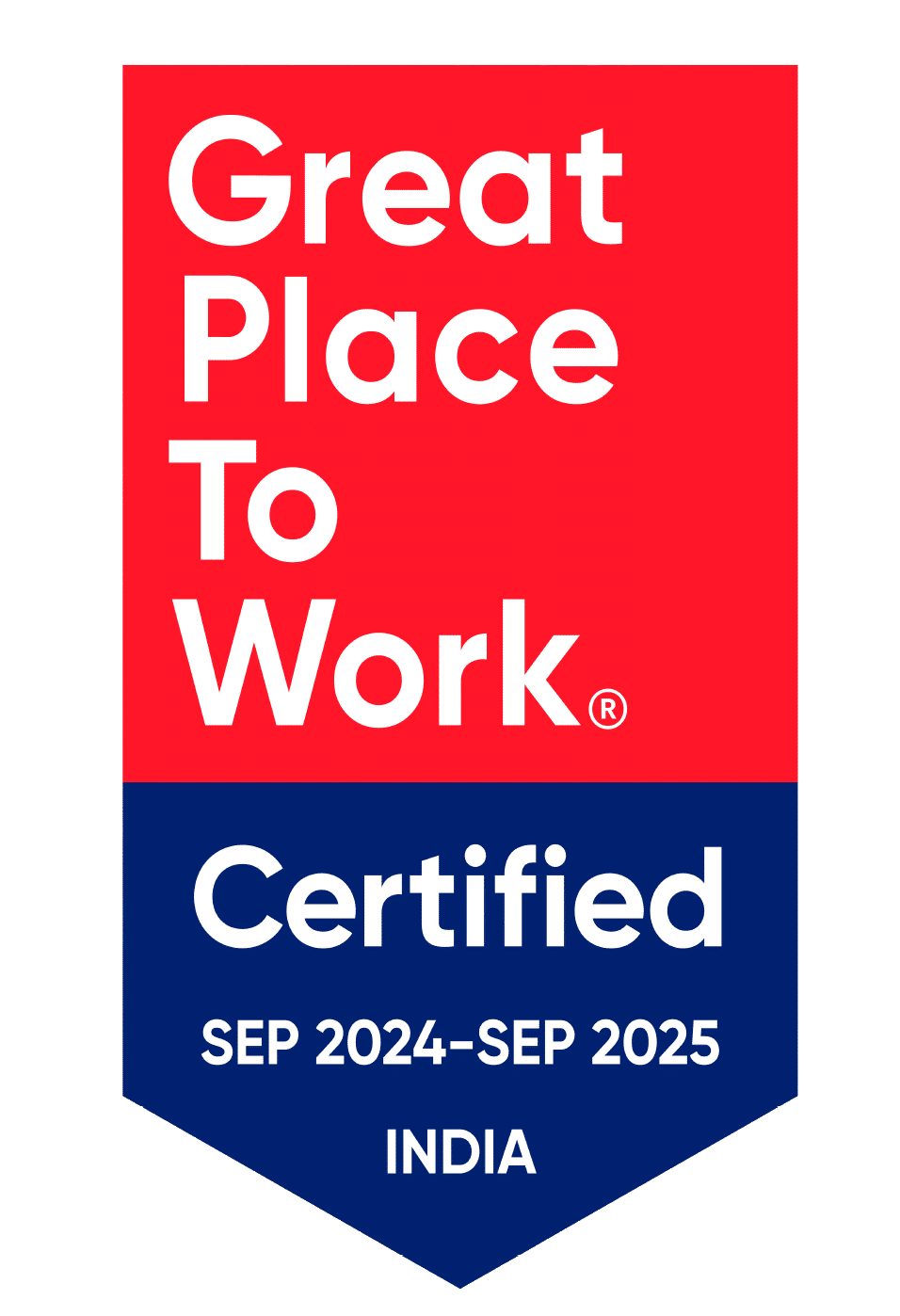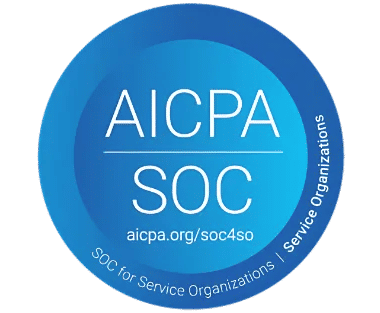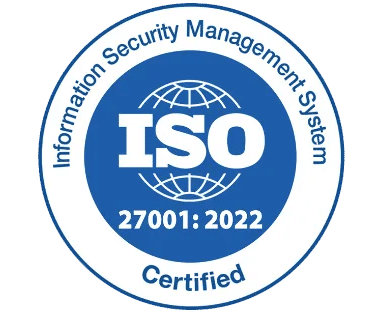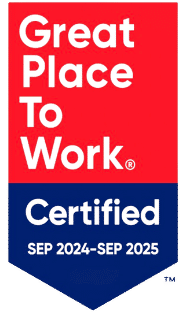What is an Expense Reimbursement? How to Make It Efficient

Reimbursements can be a significant expense for businesses. Using the right methods and technology is crucial to prevent wasting time and resources in the reimbursement process.
Expense reimbursement can be a lengthy and complex procedure, taking up valuable employee time while also posing a risk of expense fraud.
What is Expense Reimbursement?
Expense reimbursement refers to the process of compensating employees for expenses they incur while performing business-related duties. These out-of-pocket expenses are typically reimbursed for activities such as travel, meals, and supplies-related purchases.
For instance, if employees use their travel credit to book tickets for a business conference in Australia, or if finance managers pay for presentation supplies, those expenses need to be reimbursed with a reliable business expense tracker app can help streamline the process
Recommended Reading: Expense Tracking Software: Complete Guide (2025)
Examples of Reimbursable Expenses
Employees can submit reimbursement claims for various expenses, as many companies (approximately 89%) consider certain purchases essential for business operations. However, these expenses must serve a legitimate purpose within the company
For example, a business lunch or dinner falls under the entertainment expense category. If an employee covers the cost of a meal while meeting with a business partner or client, they can submit a reimbursement claim to be reimbursed by the company.
Other common reimbursable expenses include office supplies, transportation costs such as fuel or public transit, and travel expenses including flights or accommodations.
What expenses are eligible for reimbursement in any organisation?
- Other Reimbursable Work-Related Expenses
Any other valid, work-related expenses not mentioned above should also be considered for reimbursement. This could include healthcare expenses or fuel charges for employees using their personal vehicles for commuting. - Professional Development Expenses
Investing in employees’ professional growth is the company’s responsibility. This includes covering training programs, courses, workshops, or other programs required for skill enhancement. - Office Supplies and Equipment
Purchases made for office supplies and equipment using personal funds are reimbursable. This could include stationery, software add-ons, storage devices, laptops, tablets, and more. Some businesses may also cover internet and cellular bills when employees are working remotely. - Business-Related Subscriptions and Memberships
Subscriptions and memberships relevant to business activities should be reimbursed. This includes SaaS software, industry club memberships, and professional forums like HubSpot, content libraries, Adobe, and more. - Entertainment and Meals for Business
When employees are on business trips, conferences, or meetings, their meals must be reimbursed. Any out-of-pocket expenses incurred for entertaining clients or potential customers are also reimbursed. - Travel Costs
Travel expenses make up a significant portion of employee reimbursements. This includes air tickets, airport cabs, car rentals, public transport, and hotel stays. Additionally, visa charges and other travel-related costs are also included in this category. - Communication Expenses
With remote work becoming more common, any system or software used to maintain communication—like paid versions of Zoom or other collaboration tools—must be reimbursed.
What Makes a Business Expense Valid for Reimbursement?
When it comes to expenses, whether paid directly by the company or reimbursed later, it’s important that employees are making valid business-related purchases. This helps manage costs and ensures compliance. The finance team reviews these expenses carefully.
- Purpose of the Expense
Employees should have a clear reason for any expense they make. If there isn’t a clear purpose, the expense may be questioned. For example, buying coffee for a potential client is valid, while personal or unnecessary purchases aren’t. - Necessity of the Expense
Even if the purpose is clear, the finance team needs to determine if the expense is truly necessary. For instance, transport costs may be unnecessary if employees are working remotely. - Receipts and Documentation
Proper documentation, like receipts, is essential. Without these, employees may face difficulties getting their expenses reimbursed. - Cost Justifiability
The cost of the expense matters too. For example, buying a more expensive plane ticket when a cheaper option is available may not be justifiable. - Out-of-Pocket Expenses
Reimbursement is only possible for expenses paid from an employee’s own money. Cash advances from the company can’t be reimbursed. - Timely Reporting
Employees must report expenses within a set timeframe. Delays can result in unprocessed or rejected reimbursement claims.
What happens if an expense can't be verified?
When an expense cannot be verified, different companies may have specific procedures, but there are some common steps most organizations follow. Here’s how the finance department typically handles unverifiable reimbursement claims.
Steps to Handle Unverifiable Expenses
Request Clarification
When an expense cannot be verified, the finance team will ask the employee for further clarification. This is usually part of the company’s standard procedure and ensures that all employees are aware of this process.
Reimbursement Denial Process
If the provided clarification is insufficient and the finance team still cannot verify the expense, the reimbursement claim may be denied. This is usually applicable when the expense is personal or does not serve the company’s interests. The employee will be informed about the denial and the reasons behind it.
Partial Reimbursement
In some cases, the finance team may choose to partially reimburse the expense. This is often dependent on the company’s reimbursement limits. Employees must still ensure that the expenses align with company policies.
Consequences for Policy Violations
Re training and Education
To ensure all employees understand expense policies, regular re-training sessions are recommended. This helps improve knowledge of reimbursement processes and ensures compliance with company standards.
What is an Expense Reimbursement Policy?
An expense reimbursement policy is a set of guidelines that outlines how employee expenses are handled and reimbursed. It includes details such as which expenses are eligible for reimbursement, the process employees must follow to submit claims, and the timeline for receiving reimbursement.
Effective reimbursement policies may also provide contact information for employees who have questions about their claims or need assistance. A well-structured policy ensures a smooth process, helping both employees and the finance team manage expenses effectively.
By understanding what an expense reimbursement policy entails, companies can tailor it to align with their goals and improve overall financial management.
Why is a Clear Expense Reimbursement Policy Needed?
Risk Mitigation and Fraud Prevention
Clear policies help prevent misuse or fraudulent activities. Employees understand the importance of providing verified details, and finance teams are equipped to handle claims that meet company standards, reducing the risk of fraud.
Efficient Expense Reimbursement Process
A standardized process helps both finance teams and employees navigate reimbursements more smoothly. This efficiency benefits everyone involved, ensuring quicker claim approvals and fewer disruptions.
Compliance
A clear expense reimbursement policy ensures compliance by providing guidelines for employees to follow. Without it, employees may not fully understand what is expected of them, leading to inconsistencies. By adhering to these policies, businesses can minimize finance-related issues and ensure everyone is on the same page.
Preparations for Audit
A detailed reimbursement policy leads to better record-keeping, which is crucial during audits. It helps in maintaining a transparent and organized financial system, making audits more efficient and less prone to errors.
Financial Accountability
With a clear policy, employees take responsibility for making expenses that align with company guidelines. This accountability reduces the need for finance teams to frequently deny or question reimbursement claims, streamlining the process.
Employee Satisfaction
Employees feel more confident when they know their business-related expenses will be reimbursed in a timely and clear manner. A straightforward policy ensures they are well-supported, contributing to a positive work environment.
Clarity and Understanding
Having a well-defined reimbursement policy promotes clarity and understanding. When employees know what expenses reimbursable and what steps they are needed to follow, they are better prepared and less likely to make mistakes.
Efficient Budget Control
Expense policies play a vital role in managing budgets effectively. By clearly defining reimbursable expenses, businesses can prevent overspending and maintain better control over financial allocations.
What Are Reimbursable Expenses and How to Manage Them?
Not all expenses are eligible for reimbursement, and the determination depends on company policies. It is essential to establish clear guidelines to ensure transparency and consistency in the reimbursement process.
Key Elements to Include in an Expense Reimbursement Policy:
Eligibility for Reimbursement
Define which positions or roles are eligible for reimbursement. While most organizations include all employees, some may limit eligibility based on job functions or responsibilities.
Setting Reimbursement Limits
Implementing spending limits helps control overspending. For example, some companies may set a cap of INR 50,000 for specific expense categories, ensuring accountability and financial discipline.
Required Documents
Employees must submit relevant documentation, such as receipts or invoices, to validate their reimbursement claims. Higher-value expenses may require additional supporting documents to ensure accuracy.
Submission and Approval Process
Clearly outline the process for submitting reimbursement claims. Ensure employees understand the steps involved, including deadlines for submissions and the approval workflow for different expense types.
Timeframe for Reimbursement
Providing a clear timeline for reimbursements helps both employees and the finance team manage expectations. It ensures claims are processed smoothly and efficiently.
Managing Foreign Currency Expenses
Expenses incurred in foreign currencies require a clear procedure to handle currency conversions and related documentation. This avoids confusion and ensures accurate reimbursement.
Consequences for Policy Violations
Establish consequences for policy violations to maintain accountability. Whether it’s misuse of funds or submission of unverifiable claims, having a clear framework helps manage such situations effectively.
Defining Role-Specific Expense Categories and Limits
Different roles may have varying expense needs. For instance, customer-facing teams may require higher entertainment expenses compared to back-office roles. Setting role-specific expense categories and limits ensures fairness and accuracy.
Expense Reporting Tools
Using customizable expense reporting tools streamlines the process, allowing for tailored reports based on departments or roles. These tools can automate approval workflows and enhance overall efficiency.
Components of an Expense Report:
Employee Information: Full name, work ID, and department.
Expense Details: Date, type, and a brief description of the expense.
Supporting Documents: Receipts or invoices for validation.
Total Charges: Inclusive of taxes, fees, and other costs.
Bank Details: For reimbursement, including account number and IFSC code.
Approval Details: Supervisor’s approval and signature.
Understanding the Expense Reimbursement Process
A well-defined expense reimbursement policy ensures a smooth process and helps prevent overspending or unauthorized claims. With a clear policy in place, employees know what expenses are eligible for reimbursement, reducing any confusion. You can tackle these obstacles with Expense tracking software easily.
Step-by-Step Expense Reimbursement Process:
- Establishing a Clear Expense Policy
Start by creating a comprehensive expense reimbursement policy. This should outline what expenses are reimbursable and which are not. Define how claims should be submitted—such as format, deadlines, required proofs, and any necessary attachments. Include additional details like required signatures or department-specific information. - Educating Employees
Once the policy is established, it’s crucial to educate employees about it. Organize sessions to explain the rules and key steps involved in the reimbursement process. Ensuring that everyone understands these steps will promote compliance and reduce errors. - Providing Necessary Documentation Requirements
Identify and communicate the necessary documentation needed for expense claims. Common examples include receipts, invoices, purchase bills, and subscription proofs. These documents validate the claim and help maintain accurate records. - Capturing Expenses
Decide how expenses should be documented. Traditional methods involve keeping physical receipts, while automation systems allow employees to upload digital receipts directly. Automation streamlines the process by handling the documentation and processing reimbursements seamlessly. - Organizing and Categorizing Expenses
Whether manual or automated, organizing and categorizing expenses is essential. Automation systems simplify this by sorting expenses into categories and creating organized reports. Manual systems require teams to manage and categorize expenses manually. - Submitting Expense Reports
Employees should submit their expense reports within the defined timeline. The finance team reviews each submission, ensuring they meet policy requirements. Any discrepancies or incomplete reports are sent back for corrections. - Review and Approval
Once submitted, the finance team reviews all claims for accuracy and validity. Approved claims are forwarded to department managers or heads for final approval before reimbursement. - Timely Reimbursement
After validation, legitimate claims are reimbursed. Employees receive their reimbursements either with their salaries or through separate payments, ensuring prompt and accurate processing.
Common Challenges in Expense Reimbursement Process
Managing employee reimbursements presents several challenges such as process inefficiencies and ensuring employee compliance. These issues can disrupt the smooth flow of operations if not effectively addressed.
Here are some common challenges businesses face:
- Approval Bottlenecks Manual workflows create bottlenecks in the approval process, requiring employees to navigate multiple levels of approvals. Missing details or attachments necessitate re-submission, further delaying the reimbursement process. Automation systems streamline approvals, reducing these inefficiencies.
- Lack of Clarity and Communication Confusion around documentation, processing steps, and approval chains can lead to delays and misunderstandings. Clear communication and thorough training are essential to ensure employees fully understand the policies, thereby improving efficiency.
- Receipt Management Managing physical receipts is a cumbersome task, especially in manual systems. Organizing, verifying, and ensuring authenticity adds complexity. Missing or fake receipts escalate the difficulty in handling reimbursements.
- Manual Audit and Compliance Checks Ensuring compliance with company policies through manual auditing is time-consuming. Mistakes during this phase can damage the company’s reputation and result in errors that require significant effort to resolve.
- Fraud Prevention Expense fraud, such as fake receipts and exaggerated claims, remains a persistent issue. Automation can reduce fraud risks, but manual processing increases the likelihood of oversight and fraudulent activities.
- Limits on Personal Cash Flow Delays in reimbursement can restrict employees’ personal cash flow. Traditional methods like cheque payments add further delays, reducing trust and impacting employee satisfaction.
- Policy Compliance Ensuring strict adherence to expense policies is challenging, as accidental and intentional non-compliance can occur. Automation software helps mitigate these issues by reducing human error and streamlining compliance.
- Manual Processes Manual handling of reimbursements is both time-consuming and prone to errors. Reviewing hundreds of claims for validity and accuracy is tedious, often leading to additional resources and time spent on corrections.
- Lack of Spending Visibility Manual expense processes hinder real-time spending visibility. It takes days to process claims and enter data, meaning overspending or non-compliant expenses may go unnoticed. Transparency and real-time insights are critical for effective financial management.
What are Some Innovative Approaches to Expense Reimbursement?
Rather than requiring employees to incur expenses out-of-pocket and then seek reimbursement, many businesses are exploring alternative methods for managing expense reimbursements. These approaches allow companies to better control and monitor expenses while maintaining security and accountability.
- Corporate Cards
Corporate card providers offer businesses the ability to assign physical cards to employees, promoting greater financial accountability. With corporate cards, employees are responsible for their own expenses, which can help reduce misuse and overspending. It’s crucial to establish and communicate corporate card policies clearly to avoid misuse. - Prepaid Cards
Prepaid cards offer an alternative to corporate cards by requiring funds to be loaded before use. These cards are not linked to a bank account, providing businesses with full control over how much can be spent. Prepaid cards are ideal for managing specific budgets, ensuring that expenses remain within designated limits. - Per Diem Allowances
Per diem allowances provide employees with a daily allowance to cover costs during business travel. These allowances are intended for justifiable travel expenses, and any costs exceeding the provided per diem must be paid out of pocket. - Expense Advances
Expense advances, or cash advances, provide employees with upfront funds for business transactions. While this method can be risky due to limited expense reporting, it proves useful for situations where employees cannot afford to settle expenses immediately. Recurring expenses are a prime example of when expense advances can be beneficial.
How to Streamline the Employee Expense Reimbursement Process?
To make the employee expense reimbursement process smoother and more efficient, consider these steps:
Implement an Automated Expense Management System
Automation simplifies the process by handling expenses efficiently. It helps manage spending, reduces errors, and speeds up reimbursements.
Set Clear Expense Policies and Guidelines
Having a clear expense policy ensures employees understand how to submit claims, what documents are needed, and when deadlines are due. This reduces confusion and mistakes.
Use a Mobile Expense Management System
A mobile app for your expense management system allows employees to easily upload receipts, track payment statuses, and monitor approvals anytime, anywhere.
Go Digital with Receipts
Using digital receipts makes storing and managing expenses easier. They eliminate the risk of losing physical receipts and ensure long-term accessibility.
Simplify Approval Workflows
Create a simple yet thorough approval process with multiple levels of review. Employees should know exactly who to submit claims to and the steps needed for approval.
Communicate and Train Employees
Clear communication and proper training help employees understand the expense policies. This makes it easier for them to follow the process and avoid mistakes.
Regularly Review and Audit Reports
Regularly checking and auditing expense reports helps identify errors or potential issues early on. This ensures accuracy and prevents fraud.
Utilize Corporate Cards
Corporate cards provide better control and visibility over spending. They allow easy tracking of expenses and accountability for each employee.
How Corporate Cards Solve Common Expense Reimbursement Challenges
Corporate cards are a powerful solution to streamline and address common challenges in expense reimbursement.
- Easy Expense Tracking
With corporate cards, tracking expenses becomes simple. All transactions are logged in real-time, eliminating the need for physical receipts and paper trails. You’ll know exactly where and how much employees are spending at any given moment. - Better Policy Compliance
Corporate cards help ensure expense policy compliance by setting spending limits and assigning cards to specific categories or departments. Any transaction exceeding the limit requires approval from supervisors, keeping spending in check. - Effective Budget Allocation
Corporate cards can be tailored to different departments or projects, allowing you to allocate budgets more efficiently. Features like setting limits for one-time or recurring payments help control spending effectively. - Simplified Receipt Management
Since all transactions are tracked through corporate cards, there’s no need to manage physical receipts. Digital records are automatically created, ensuring easy access and long-term storage. - Seamless Reconciliation
Corporate cards integrate seamlessly with accounting systems, making reconciliation a breeze. All expense details are automatically entered into the system, reducing manual data entry and errors. - Better Data Analytics
Corporate cards provide real-time data, allowing for enhanced analytics. With every expense logged, you can generate reports and insights to understand spending patterns and employee behaviour. - Minimized Fraud Risks
Real-time tracking prevents fraudulent activities. Employees cannot alter information since all transactions are recorded immediately, ensuring transparency and accuracy in expense reporting.
Expense Tracker 365: Your All-in-One Expense Management Solution
Expense Tracker 365 is here to make managing your business expenses easier than ever. From simplifying the reimbursement process to ensuring accurate data and avoiding delays in vendor payments, our solution covers it all. Whether you’re dealing with fraud or high international transfer costs, Expense Tracker 365 streamlines every step of the way, providing you with a seamless and efficient expense management experience.
Conclusion
Expense reimbursement is a crucial process for managing employee expenses efficiently. By implementing clear policies, automation, and streamlined workflows, businesses can enhance accuracy, reduce delays, and improve overall expense management.
Expense Tracker 365 is an all-in-one solution simplifies reimbursement, tracks expenses in real-time, and ensures seamless approval processes, empowering your business to operate more efficiently. Try Expense Tracker 365 today and experience the difference!
Frequently Asked Questions
1. What is Expense Reimbursement?
Expense reimbursement is the process by which employers repay employees for out-of-pocket expenses incurred while conducting business-related activities, such as travel, meals, or purchasing necessary supplies.
2. How can Expense Reimbursement be made more efficient?
Expense reimbursement can be streamlined by implementing automation, setting clear policies, using expense management software, and ensuring proper documentation and real-time tracking of expenses.
3. Are all expenses reimbursable?
Not all expenses are reimbursable. Only business-related expenses that comply with company policies are eligible for reimbursement. Personal expenses, unless directly related to business, are typically not reimbursed.
4. What are the benefits of using Expense Tracker 365?
Expense Tracker 365 simplifies expense management by providing real-time tracking, automated approvals, and streamlined reimbursement workflows, helping businesses reduce errors and improve efficiency.
5. How can companies prevent fraudulent expense claims?
Companies can prevent fraudulent expense claims by implementing automation, setting clear approval workflows, conducting regular audits, and using expense management software like Expense Tracker 365 for better oversight.










_svxLrd-8yH.png)

_2VYSFUTN5m.png)

_JiluXJRGNl.svg)

_2djTKNocf.png)





_Rapo0hRMBy.png)










